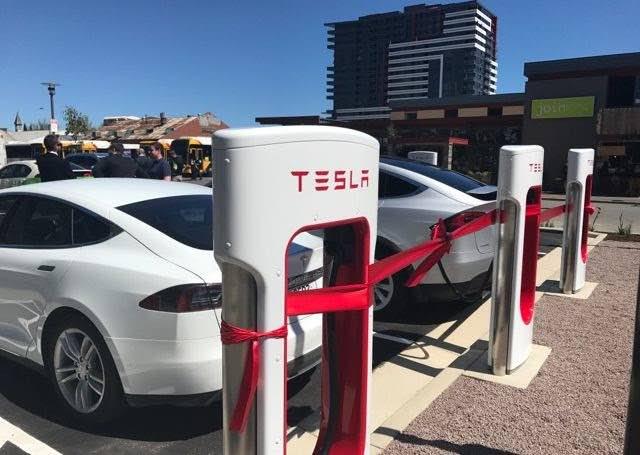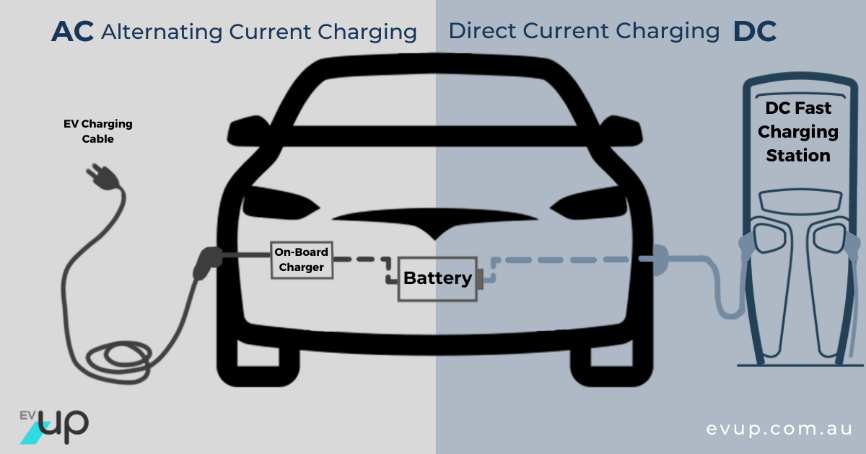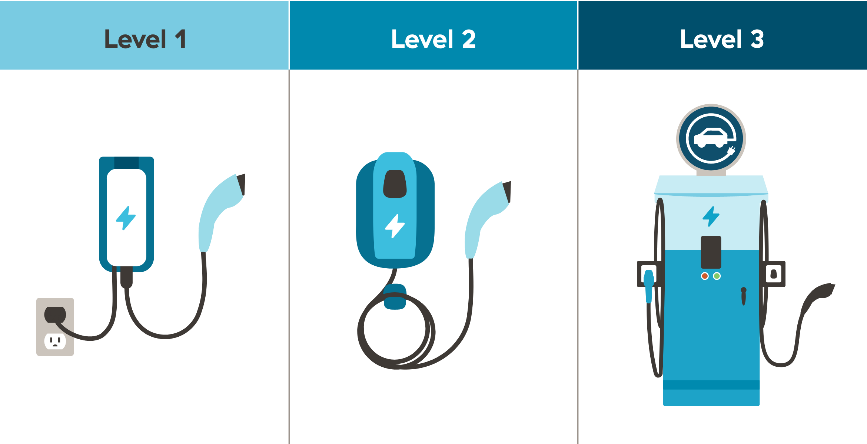Learning the different charging options for EVs is very important, whether you are an experienced EV driver, are purchasing an EV soon, or even if you are still driving a traditional car.

There are three EV charging levels: Level 1, Level 2, and Level 3. In this article, we will explain how EVs charge, their limitations, different technical specifications for EV charging levels, and detail different aspects of the subject. This will give you enough information to help you determine the best EV charging solution for you.
Understanding EV Charging: AC Charging vs. DC Charging

EV charging can be done with AC (alternating current) or DC (direct current) power. Level 1 and Level 2 EV charging uses AC power, while Level 3 charging exclusively uses DC power at high currents, which is why it is also known as DC Fast Charging (DCFC).
AC charging requires the EV charger to be connected to a 230VAC single-phase or 400VAC three-phase connection; the charging current varies according to the charging capacity of the charger and the EV model. During AC charging, the AC to DC conversion occurs directly on the onboard charger installed at the EV.
DC charging does not use the onboard charger that limits the maximum current, which is why EVs can charge at a much faster speed. The AC to DC conversion during DC charging occurs at the charging station, allowing a high current to be delivered to the EV and rapidly charge the battery.
Are There Limitations for AC and DC Charging?
Charging speed is not only limited by the AC and DC power rate of the charger, but also by the charging capacity of each particular EV. This means that charging an EV with a high-capacity AC charger does not mean the best Level 2 charging time will be provided as the maximum charging capacity is also limited by the EV manufacturer.
The following table shows charging limitations for some popular EVs in Australia:
What Is the Difference Between Different EV Charging Levels?

After understanding the differences between AC and DC charging, it is time to learn about the various charging levels and how they differ from each other.
Level 1 EV Charging
Level 1 EV charging requires a single-phase 230VAC connection and it is considered the slowest AC charging option. Since the power rate for AC Level 1 EV Chargers goes from 1.8kW up to 2.4kW, charging with a Level 1 EV charger can be done over regular home wiring as long as there are no other high-demand appliances connected to the circuit.
Level 2 EV Charging
Level 2 EV charging requires a single-phase 230V connection for homes or a three-phase 400VAC connection for residential and commercial ones. Charging capacity for Level 2 chargers varies from 3.6kW up to 9.6kW, while high-capacity residential and commercial applications go as high as 22kW. Residential and commercial Level 2 EV charging requires dedicated electrical wiring to operate. Most EV chargers that you will find for your home such as the Tesla Gen 3, the Zappi or the Wallbox will be level 2 models (go here to shop our chargers). If you purchase an untethered charger, you’ll likely need to purchase a charging cable too.
Level 3 EV Charging
Level 3 EV charging features a complex electrical infrastructure to convert three-phase AC power to DC directly at the charging station. The power rate for a DCFC stall goes from 25kW up to 350kW and it charges extremely fast. Level 3 or DC Fast Charging stations are highly expensive, which is why they are almost exclusively used in public charging stations. Almost no homes will ever have this as it’s very costly ($50k-$100k to install) and electrical infrastructure at homes will not be able to withstand the high voltage of Level 3 chargers.
Final Word: EV Charging Levels Suited for All EV Drivers
The Australian EV industry features charging options that suit the needs of every EV driver in the country, that go from regular home EV chargers up to DC Fast Charging stations. After learning the basics of EV charging, you can now pick the best EV charger available for you or even decide what your next EV will be considering its charging parameters.
revcharge is an end-to-end EV charging service provider. We take the stress and guesswork out of not only finding an EV charger that meets your needs, but that too of organising a trained technician to install and activate your system. Every EV charger on offer has been carefully evaluated for its performance and features by our specialised team.
Our goal is to save you time and money, while ensuring a quality install that will last you for years to come. All you have to do is answer some quick questions about your home and electric car and send us photos of your switchboard and preferred charger location. We’ll take care of the rest!
Learn more here and get an obligation-free quote today!